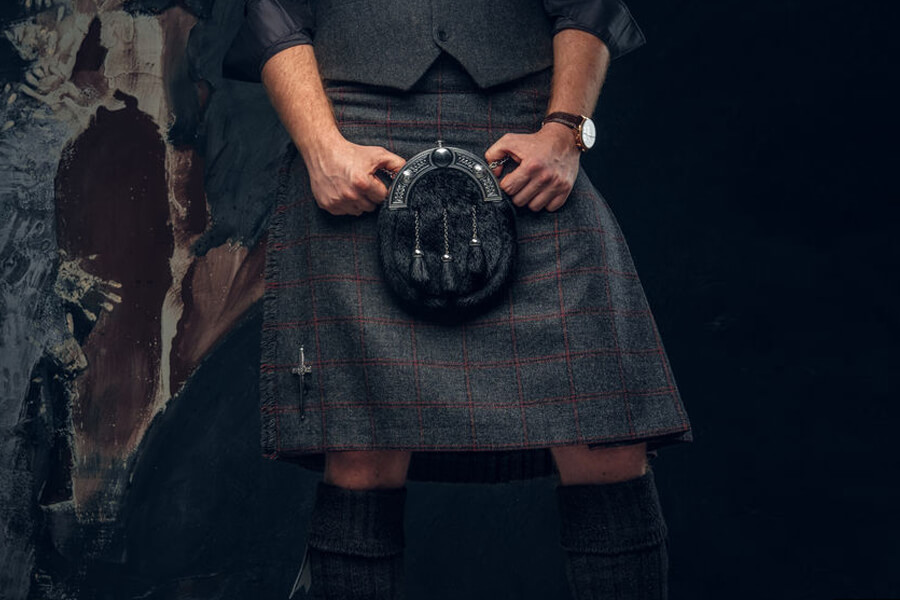What do you think when you spot men wearing skirts? That they must be in costume? That they’re probably transsexual? That they’re in drag? In some cases, a man wearing is a skirt is none of the above. Here are some reasons you might spot a man in a dress or skirt.
Societal reasons; challenging norms
At the Oscars, actor Billy Porter wore a black velvet tuxedo dress “to challenge traditional ideals of men’s fashion.” But women wear pants all the time and no one bats an eye. So why is a man in a dress or skirt still turning our heads?
Historical reasons
How quickly we’ve forgotten that Greek and Roman men used to wear robes and togas. For many soldiers, pants were only worn when they needed to avoid chafing while horseback riding or to keep warm during colder months. The robes and togas were preferred by men, not just for comfort, but because they allowed men to show off their legs, which were believed to represent strength and virility.
Scottish kilts are one of the few historical remnants of men’s “skirts” that are still worn today. Although they were worn in battle, today they are sometimes worn on a typical day or with a full ensemble to fancier events. Full-dress kilts can cost thousands of dollars when full adorned with jackets, pins, belts, shoes and a sporran (the pouch that serves as a purse or pocket).
Cultural reasons
In Japan, men wore kimonos and hakamas. Hakamas (which come divided, like pants, or undivided, like a skirt) used to be required apparel for men.
In some tropical regions, men still wear pieces that look like skirts. In Samoan culture, for example, men wear an ie lavalava, which is similar to a sarong. It’s a piece of fabric tied around the waist. Samoan men also wear ie faitagas, which are like ie lavalavas but with thicker fabric. These are often worn with ties, flip flops and button-up shirts that are tucked in.
Religious reasons
Catholic priests have worn a cassock or long robe, to distinguish them from the laity. Buddhist monks wear a robe to show “uniformity of intention.” (Robes were often yellow or orange because they were dyed using saffron or turmeric.) Jain monks often wear plain white robes.

